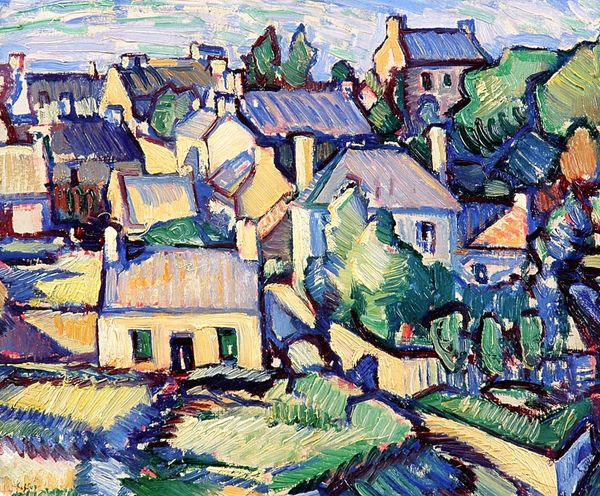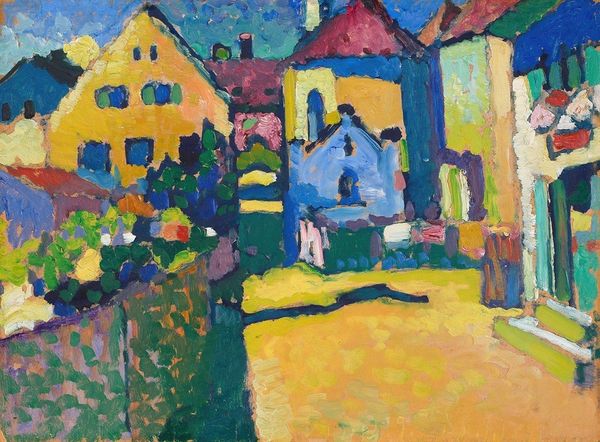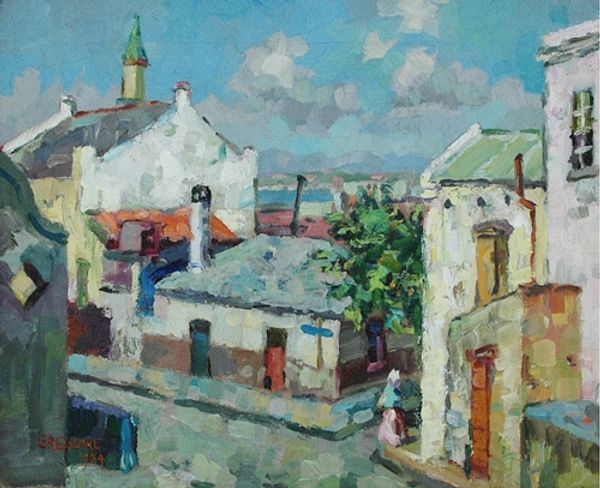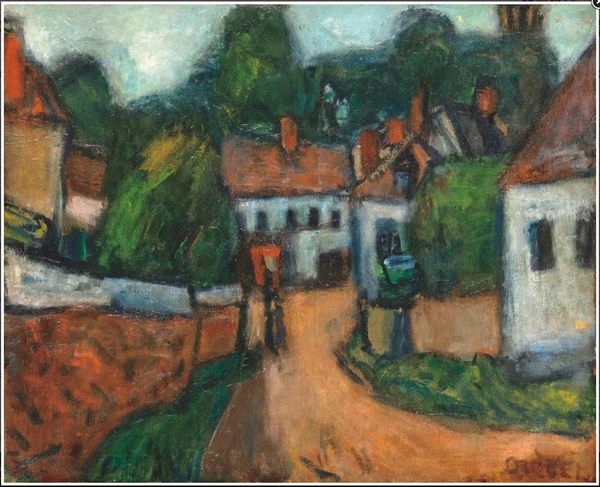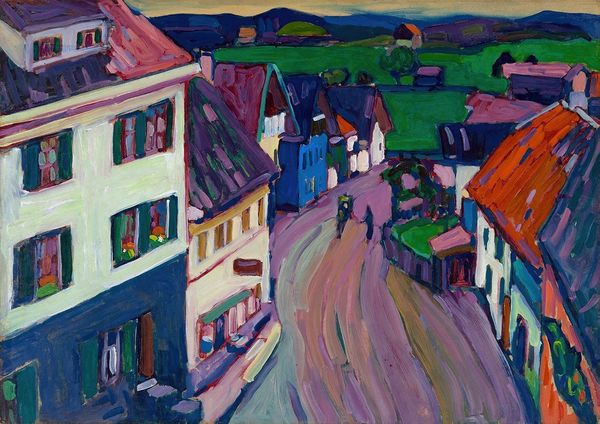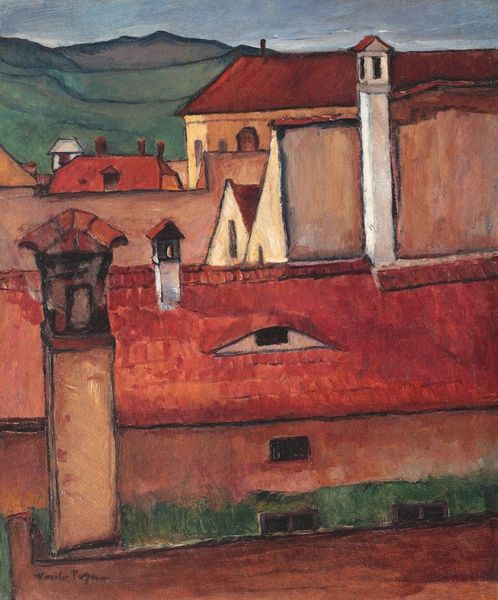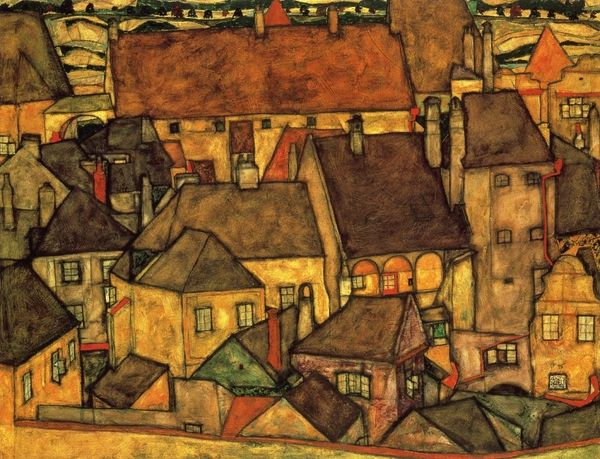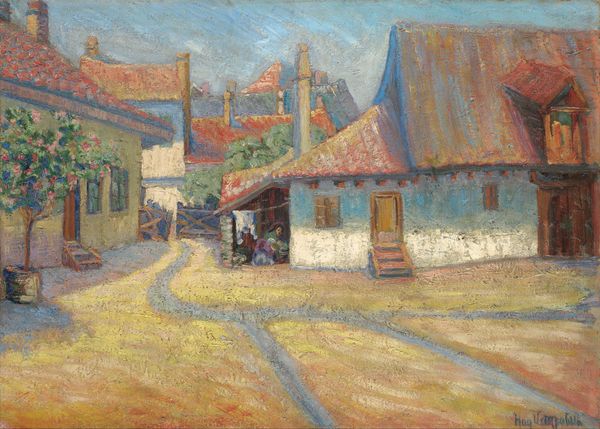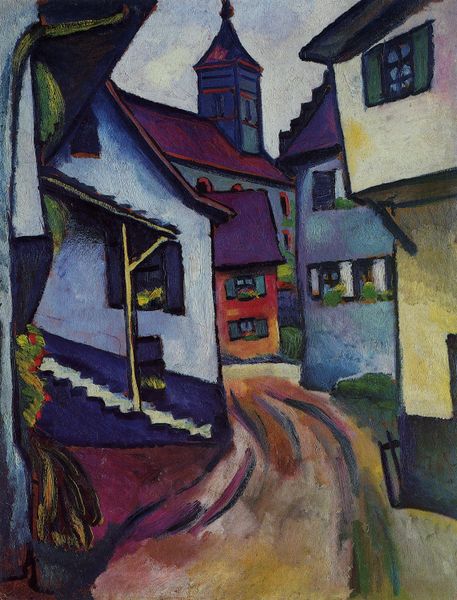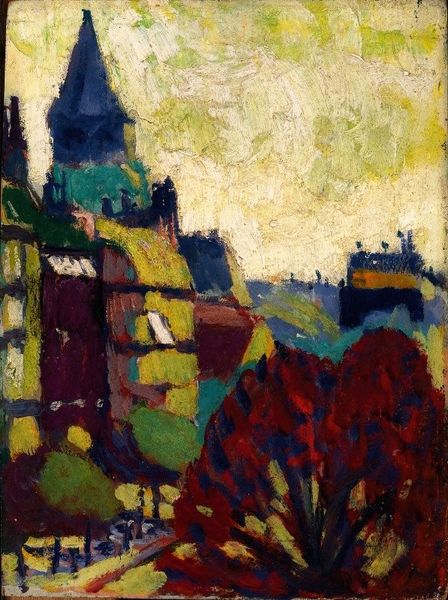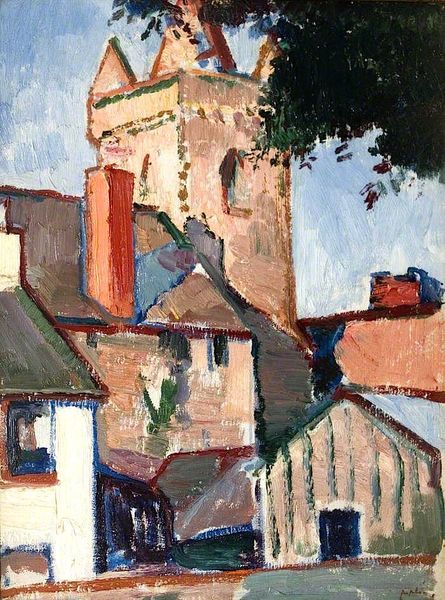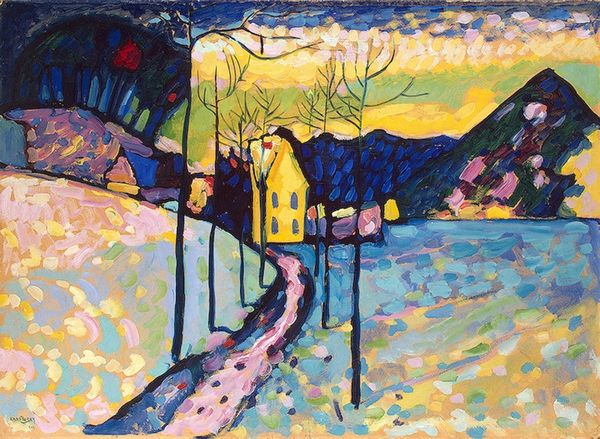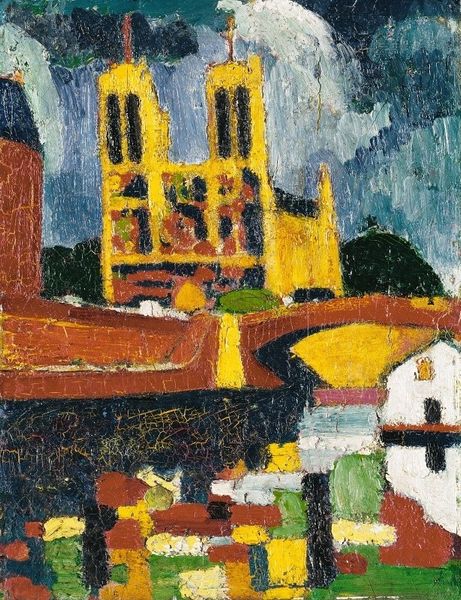
Copyright: Public domain
Editor: So, this is Samuel Peploe’s “Kirkcudbright,” painted in 1918, using oil paints. There's something really striking about the blocks of colour and the almost harsh way the light hits the buildings. What draws your eye when you look at this painting? Curator: I immediately notice the visible brushstrokes, and I wonder about the availability and cost of paints at this time. Pigments weren't always readily accessible. Notice how Peploe’s emphasis on pure color connects him to the social and economic landscape of post-impressionism and the Scottish Colourists movement. Editor: That's interesting, I was just focusing on how the shapes form the buildings! What does the application of the paint and the artistic production tell you about the artist’s mindset? Curator: Peploe, like his contemporaries, was concerned with elevating the craft of painting. Think about the labour involved – the grinding of pigments, the mixing of oils. He seems to value the process and the physicality of the materials. These elements suggest a move toward a more democratic understanding of art production, emphasizing the ‘how’ as much as the ‘what’ of the painting. Does that shift how you view his colour choices now? Editor: It does a little! I hadn't considered how the work that went into creating the paints affected his choices and priorities. That's a neat idea! Curator: Exactly! And thinking about the ‘how’ compels us to reconsider what constitutes art and the hierarchy between fine art and craft. What started as simply a landscape, through an art historical understanding, challenges societal standards of what art is, the purpose it should have and how it is produced. Editor: I hadn't considered the labor involved and what that signifies for the Scottish Colourists in a broader social context. This deeper reading has provided food for thought on how materials shape art history. Curator: Likewise! Looking through the lens of materiality illuminates how we view these painters and the cultural context surrounding them.
Comments
No comments
Be the first to comment and join the conversation on the ultimate creative platform.
